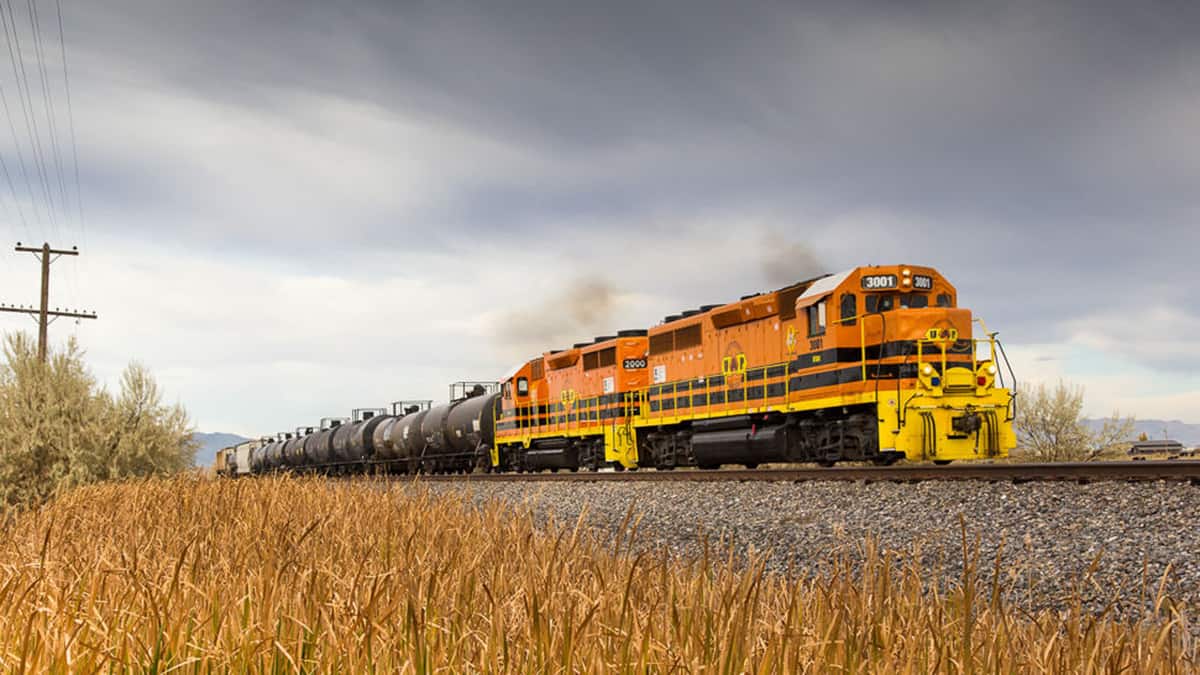As the rail industry gears up to seek federal engagement in transportation infrastructure issues such as grant funding for capital projects, a new factor – the manufacturing downturn brought about by the COVID-19 pandemic – is influencing discussions between the industry and lawmakers.
In particular, rail equipment producers are vulnerable because the severe drop in railcar traffic has dried up demand for railcar manufacturing, according to the Railway Supply Institute (RSI).
“The COVID-19 pandemic has devastated the nation’s economy and that devastation is now directly impacting the U.S. domestic freight rolling stock manufacturing sector,” said Nicole Brewin, vice president of government and public affairs at RSI. RSI is considering whether to lobby Congress for an investment tax credit that would help stimulate railcar orders.
Should the production of railcars and rail equipment shrink, that could affect the sector’s downstream suppliers, from iron and steel makers to factory equipment suppliers, Brewin said. She cited a May 2017 Oxford Economics study which estimated that as many as 65,000 U.S. jobs and $6.5 billion in annual gross domestic product is at risk should foreign entities, including Chinese state-owned enterprises, take over the output of U.S. rail equipment production.
Meanwhile, FreightCar America (NASDAQ: RAIL) said this week during its first-quarter earnings call that it received a loan from the CARES Act Paycheck Protection Program, which was part of the pandemic-related stimulus package. The company sustained a net loss of $16.9 million compared with a net loss of $14 million a year ago.
“We haven’t seen orders this low since the Great Recession and it’s worrisome because once these manufacturing jobs are lost, they are hard to get back,” Brewin said.
In addition to exploring the idea of pursuing an investment tax credit to encourage railcar orders, the rail industry is also seeking to ensure that federal grant programs that support rail capital projects continue to get funding, according to RSI, the Association of American Railroads (AAR) and the American Short Line and Regional Railroad Association (ASLRRA).
These grant programs include reauthorizing the rail title within the FAST (Fixing America’s Surface Transportation) Act, which would fund capital projects addressing signal crossings and track and grade maintenance; continuing the highway railroad grade crossing safety program, known as the Section 130 program of the FAST Act, which seeks to reduce hazards at railway-highway crossings; maintaining and expanding the CRISI (Competitive Rail Infrastructure and Safety) grant program and the INFRA (Infrastructure for Rebuilding America) grant program, both of which provide grants to state and localities on rail-related capital projects; maintaining the capital investment program for passenger rail projects under the purview of the Federal Transit Administration; making permanent the 45G tax credit that encourages short line railroads to make capital investments; and providing funding from transit agencies that would help with the implementation and maintenance of positive train control.
Pandemic-related issues that the rail industry wants Congress and the White House to address include removing the effects of sequestration from the railroad unemployment insurance (RUI) program, which subject the program to budget reductions per the Budget Control Act of 2011; providing additional administrative funding to the Railroad Retirement Board, the body that oversees the RUI program, so that it can modernize its information technology capabilities; and ensuring freight railroad workers get priority for access to testing, personal protective equipment, sanitizers, non-medical grade facial coverings, and other health-related or protective supplies, according to AAR.
However, all three trade groups said they don’t want any infrastructure bill to contain provisions addressing controversial issues such as mandating train crew sizes or increasing the weight and size of trucks.
One uncertainty is how an infrastructure bill will take shape – whether the bill will be part of the next phase of a coronavirus-related stimulus package or whether it will be a stand-alone bill. Furthermore, if it’s a stand-alone bill, its scope could range from a six-year FAST Act reauthorization or a two-year bill that would dole out funding but leave out significant policy changes. While the former option might be preferred by some on Capitol Hill, it would also require a lot of spending discussions, which might be challenging because of the upcoming presidential election.
“We’re in this period now of knowing eventually something will happen around infrastructure. It’s just a matter of when. It’s less a matter of if and more a matter of when,” Brewin said.










